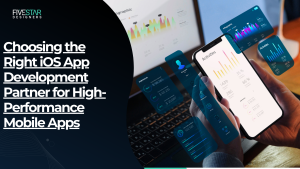Are you planning to launch a mobile app startup? Do you want to attract investors, customers, and partners with a well-crafted business plan? In this blog, we will guide you through the process of writing a business plan for a mobile app startup. Following our tips and templates, you can create a comprehensive, persuasive, and SEO-optimized business plan showcasing your vision, strategy, and potential.
Step-by-Step Guide to Write A Business Plan For A Mobile App Startup
Here are the essential steps to writing a business plan for an app:
Executive Summary
Start with a brief overview of your app, its unique value proposition, target market, competitive landscape, and financial projections. Make it clear, concise, and compelling; this section is the first thing investors and stakeholders will read.
Include the following in your executive summary:
– A brief description of your mobile app startup and its mission
– Your target market and unique value proposition
– Key features and functionality of your app
– Your revenue model and financial projections
– Funding requirements and how you plan to use the investment
Remember to keep your executive summary concise and to the point. A good executive summary should be able to communicate your business idea in one page or less.
Market Analysis
Describe your app’s industry’s market size, growth potential, trends, and customer needs. Conduct market research, surveys, and interviews to gather data and insights. Use graphs, charts, and tables to illustrate your findings and demonstrate your expertise.
Here are some key components to include in your market analysis:
– Demographics and psychographics of your target audience
– Market size and growth potential
– Analysis of your competitors and their strengths and weaknesses
– Industry trends and challenges
Using credible sources for your market research, including industry reports, surveys, and data from reputable sources like Statista or App Annie, is important.
Competitor Analysis
Identify your main competitors, their strengths, weaknesses, and market share. Analyze their pricing, marketing, distribution, and product features. Highlight your app’s advantages, such as unique features, better user experience, or lower costs.
Here are some key components to include in your competitor analysis:
– List of top competitors and their products or services
– Comparison of features, pricing, and user experience
– Analysis of market share and customer base
– Identification of gaps and opportunities in the market
Remember to use data and research to support your analysis and show how your mobile app startup will stand out.
Target Market
Define your ideal customers, demographics, psychographics, behaviors, and pain points. Explain why your app is relevant, valuable, and differentiated for them. Use customer personas, surveys, and feedback to validate your assumptions and refine your targeting.
Here are some key components to include in your market analysis:
– Demographics and psychographics of your target audience
– Market size and growth potential
– Analysis of your competitors and their strengths and weaknesses
– Industry trends and challenges
Using credible sources for your market research, including industry reports, surveys, and data from reputable sources like Statista or App Annie, is important.
Marketing and Sales Strategy
Outline your go-to-market plan, including your app’s positioning, messaging, channels, and tactics. Specify your acquisition, retention, and monetization strategies, such as paid advertising, social media, email, referrals, freemium, or in-app purchases. Estimate your customer acquisition cost, lifetime value, and revenue streams.
Here are some key components to include in your marketing and sales strategy:
– Target audience and customer acquisition channels
– Marketing budget and tactics, including social media, paid advertising, and content marketing
– Sales channels, including app stores and partnerships
– Pricing strategy and revenue model
Remember to be specific and realistic about your marketing and sales goals and how you plan to achieve them.
Product Development
Describe your app’s features, functionalities, and roadmap. Explain how you will prioritize, design, develop, test, and launch your app. Specify your technology stack, development team, and budget. Include mockups, wireframes, or prototypes to showcase your app’s user interface and user experience.
Here are some key components to include in your product description:
– A detailed description of your app’s features and functionality.
– User interface and user experience design.
– Technical specifications, including programming languages and tools used.
– The platform and devices your app will run on.
– Remember to be specific and detailed about your app’s features and functionality, as this will help potential investors and stakeholders understand how it works and what makes it unique.
Team & Management
Introduce your founding team, their skills, experiences, and roles. Explain how your team’s strengths and diversity align with your app’s goals and challenges. Highlight any advisors, mentors, or partners who can support your app’s growth and success.
Here are some key components to include in your team and management section:
– Bios and resumes of key team members, including founders, executives, and advisors
– Skills and experience relevant to your mobile app startup
– Organizational structure and management team roles and responsibilities
– Plans for future hires and team growth
– Remember to highlight your team’s strengths and how they will contribute to your company’s success.
Financial Plan
Provide a detailed financial projection for your app’s revenue, expenses, profits, and cash flow. Use historical data, industry benchmarks, and realistic assumptions to model your app’s financial performance. Include a break-even analysis, a sensitivity analysis, and a funding request if applicable.
Here are some key components to include in your financial projections:
– Startup costs, including app development, marketing, and staffing
– Revenue projections, including user acquisition and retention rates
– Break-even analysis, including the number of users and revenue needed to cover costs
Using credible data and assumptions is important when developing your financial projections. You can use tools like Excel or Google Sheets to create financial projections or financial planning software like LivePlan or Enloop.
Risk Management
Identify the potential risks, threats, and uncertainties that may affect your app’s success. Evaluate their likelihood, impact, and mitigation strategies. Show a comprehensive risk management plan addressing legal, regulatory, technical, operational, and financial risks.
Here are some key components to include in your risk management section:
– List of potential risks and challenges, such as market volatility, technology limitations, or legal and regulatory issues
– Analysis of the impact and likelihood of each risk
– Strategies for mitigating each risk, such as contingency plans or risk-sharing partnerships
– Plan for monitoring and updating risk management strategies
– Remember to be thorough and realistic in identifying and proactively mitigating potential risks.
Intellectual Property and Legal Considerations
Protecting your intellectual property is essential to the success of your mobile app startup. In this section, you should outline the legal considerations and steps you have taken or plan to take to protect your intellectual property.
Here are some key components to include in your intellectual property and legal considerations section:
– Overview of your intellectual property, such as trademarks, patents, copyrights, or trade secrets
– Analysis of the legal and regulatory landscape and any relevant laws and regulations
– Overview of any contracts or agreements, such as NDAs or licensing agreements
– Plan for protecting and enforcing your intellectual property rights
– Remember to consult with legal experts to ensure you comply with all applicable laws and regulations.
Launch and Growth Strategies
A successful launch and growth strategy is essential to the success of your mobile app startup. In this section, you should outline your plans for launching and growing your mobile app, including marketing and sales strategies, customer acquisition, and retention plans.
Here are some key components to include in your launch and growth strategies section:
– Overview of your marketing and sales strategies, such as social media, email marketing, or paid advertising
– Analysis of your target audience and customer acquisition and retention plans
– Overview of your growth strategies, such as strategic partnerships or expansion into new markets
– Plan for measuring and evaluating success, such as tracking metrics and conducting regular market research
Remember to be specific and realistic in your goals and timelines and be prepared to pivot as needed based on market feedback and customer insights.
Exit Strategy
While it may seem counterintuitive to plan for an exit when starting a business, having an exit strategy is essential for attracting investors and preparing for the future. In this section, you should outline your plans for exiting your mobile app startup, such as through a merger, acquisition, or initial public offering (IPO).
Here are some key components to include in your exit strategy section:
– Overview of potential exit options and their advantages and disadvantages
– Criteria for determining the best exit strategy, such as financial or strategic fit
– Plan for maximizing the value of your mobile app startup in preparation for an exit
– Timeline and process for executing your exit strategy
Remember to consult with legal and financial experts to ensure you are fully prepared for any potential exit scenario.
Conclusion
Summarize your key points, restate your value proposition, and call to action. Invite your readers to learn more about your app, ask questions, and provide feedback. Provide your contact information, website, and social media links.
Following these steps, you can create a professional, persuasive, and SEO-optimized business plan for your mobile app startup. Remember to strategically use the primary and secondary keywords throughout the blog, especially in the title, headings, meta description, and alt tags. Conduct keyword research to find the most relevant and high-volume keywords for your niche and target audience.
Read more about: How to Build an App like Uber
Tips to Write a Business Plan for Mobile App Startup
Now that we’ve covered the major business plan sections let’s dive into some tips for writing a business plan for a mobile app startup.
Keep it Simple and Concise
Your business plan should be easy to read and understand. Avoid technical jargon, and keep your sentences short and concise.
Research, Research, Research
Take the time to research your market, competition, and target audience thoroughly. Use data to support your claims and provide detailed analysis.
Be Realistic
Be realistic in your financial projections and revenue streams. Investors are savvy and will see through inflated projections.
Use Visuals
Use visuals such as charts, graphs, and images to help illustrate your points. Visuals can help break up text and make your business plan more engaging.
Get Feedback
Share your business plan with trusted advisors, colleagues, and potential investors for feedback. Use their feedback to refine your business plan and make it stronger.
Final Thoughts
In conclusion, a well-written business plan is essential for any mobile app startup. Use the tips and guidelines outlined in this blog post to create a business plan that will help you attract investors and launch a successful mobile app. Remember to use a business plan for the app as your primary keyword and app business plan, mobile app business, and business plan for an app as your secondary keywords to optimize your SEO.




